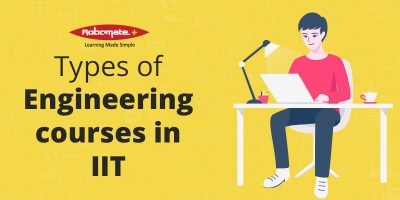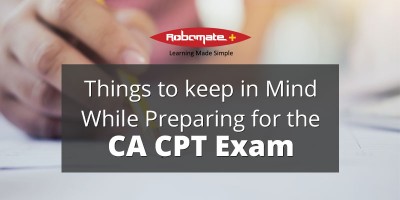State Board Commerce (XI-XII) - Test Papers
World Telecommunication and Information Society Day
Day: 17th May, It was first celebrated on 17 May 2006
Purpose: Raise awareness about information and communication technologies (ICT) and internet among people and control digital division.
Significance: World Telecommunication and Information Society Day came into existence after a resolution was passed by United Nations General Assembly following its submit in Tunis.
This day holds significance in telecommunications field as first International Telegraph Convention was held on this day and also formation of the International Telecommunication Union.
The current theme aims to focus on Artificial Intelligence (AI) to attend Sustainable Development Goals (SDGs). Artificial Intelligence (AI) has seen significant progress in recent times and helps in improving education, healthcare sector, finance, agriculture, transportation to name a few.
World Telecommunication Day
This day was being celebrated from 17 May 1865 as the foundation day of International Telecommunication Union. The aim of celebration of this day is to bring awareness among people about internet, technologies and also the control digital division.
World Information Society Day
UN General Assembly decided to declare 17 May as World Information Society Day. The aim of this resolution was to highlight the importance of ICT and raise concerns about challenges faced by the information society
World Telecommunication and Information Society Day
After 2005, World Telecommunication Day and World Information Society Day was clubbed together and celebrated on 17th May, based on ITU Plenipotentiary Conference in Turkey. Based on the revised resolution the member states and sector members celebrates this annual day
- Based on the theme adopted by the council, the theme for 2018 is “Enabling the positive use of artificial intelligence for all”
- Elaborate discussion and debate on the theme the member and the society
- Preparation of consolidated report and the areas to be discussed at the national level of each member state
What to do in the last 10 days of AIIMS Preparation?
AIIMS is one of the leading medical institutes in India. Doctors who have passed through AIIMs have worldwide recognition. AIIMs can be cracked with efforts of the candidate and encouragement from parents or guardians. It is not a difficult task to crack AIIMS.
Prepare a strategy to appear for AIIMs in 10 days. This needs full dedication and hard work.
- Previous Question Papers: The main key is to solve previous 10 years question paper. Few questions can be expected from the AIIMS Previous Years’ Question Paper. Solving previous years question paper helps in
- analyzing the type of questions appearing in the exam
- number of questions to be expected from each topic,
- strategy to solve these type of questions
- Shortlisting Important topics: We all know botany, zoology, physics and chemistry are the subjects in which we have to be thorough with NCERT syllabus, for few topics, you need to follow study materials and other books to score well
- Physics: This subject is considered as the most difficult by students, concentrate on topics which are related to medicines and can find importance healthcare sector. Important topics which should be concentrated in last 10 days of AIIMS Preparation are Mechanics, Thermodynamics, Work Power Energy, Rotational Motion, Newton’s law of Motion, Close And Open Organ Pipe, Electrostatics, AC, Magnetism, Radioactivity
- Chemistry: Here also expect questions related to medicines. Topics which should be revised are
Inorganic: Coordination compounds, read different blocks
Organic: Thoroughly follow NCERT books to electrophile, nucleophile
Physics: Chemical Equilibrium, Chemical Kinetics, Thermos Chemistry, Solid State, Electro Chemistry
Each topic of chemistry carries equal weightage and should be concentrated equally
- Biology: In addition to NCERT refer other books. Go for biological classification, animal kingdoms, family plant, photosynthesis, hormones, anatomy, diseases, microbes in human welfare, biotechnology, ecology, human physiology and genetics
Why AIIMS is considered difficult?
The number of seats in AIIM is 672 and the qualifying marks are 50% for general category, OBC 45% and SC/STs 40%. When attempting questions be careful about the wrong answers. Each wrong answer can take away 1/3rd marks. Leave the question un-attempted, in case you are not sure of the answer. Make sure you score well to qualify for AIIMS. Take proper nutritious food and keep yourself hydrated. Taking care of your health is equally important, go for walks and take small energy breaks. This will help you in increasing your concentration and memory power. Take fresh air.
Tips on the day of Exam:
- Make sure you sleep well a day before exam, else you will sleep in the exam hall
- Wake up well in advanced
- Make sure the required stationery, clothes and admit card is ready at a place
- Eat well
- Check the location of exam center a day before
- Be at the exam center well in advance
AIIMs is easy to crack provided you have prepared well for the exam. Keep yourself calm and relaxed on the day of exam. All the best!
Types of Engineering Courses in IIT
IITs and the Subjects they Offer
IIT stands for The Indian Institutes of Technology (IITs). It is an autonomous public institute providing education for students in India. It is governed by the Institutes of Technology Act, 1961. Admission into IITs across India for undergraduate admissions is done through Joint Entrance Examination – Advanced (JEE Advanced). The admission into undergraduate admissions is based on the ranks obtained. For post-graduate courses, M.Tech., MS degrees, and Ph.D. programs, the graduate IITs can write Common Admission Test (CAT), Joint Admission Test for M.Sc. (JAM) and Common Entrance Examination for Design (CEED).
List of IIT institute across India along with the B. Tech Courses offered
IIT Kharagpur – (West Bengal)
- Agricultural and Food Engineering
- Bio Science/ Biotechnology
- Chemical Engineering
- Civil Engineering
- Computer Science Engineering
- Electronics and Electrical Engineering
- Electrical Engineering
- Industrial and Systems Engineering
- Mechanical Engineering
- Metallurgical and Materials Engineering
- Mining Engineering
- Naval Architecture and Ocean Engineering
IIT Bombay – Maharashtra
- Aerospace Engineering
- Chemical Engineering
- Civil Engineering
- Computer Science & Engineering Department
- Electrical Engineering
- Mechanical Engineering
- Metallurgical Engineering & Materials Science
- Physics
IIT Kanpur – Uttar Pradesh
- Aerospace Engineering
- Bio Science/ Biotechnology
- Chemical Engineering
- Civil Engineering
- Computer Science Engineering
- Electrical Engineering
- Mathematics and Computing
- Mechanical Engineering
IIT Madras – Tamil Nadu
- Aerospace Engineering
- Chemical Engineering
- Civil Engineering
- Computer Science Engineering
- Electrical Engineering
- Mechanical Engineering
IIT Delhi – Delhi
- Chemical Engineering
- Civil Engineering
- Computer Science Engineering
- Electrical Engineering
- Electrical Engineering (Power)
- Engineering Physics
- Mechanical Engineering
- Production and Industrial Engineering
- Textile Technology
IIT Guwahati – Assam
- Bio Science/ Biotechnology
- Chemical Engineering
- Chemical and Science Technology
- Civil Engineering
- Computer Science Engineering
- Electronics and Electrical Engineering
- Electronics and Communication Engineering
- Engineering Physics
- Mathematics and Computing
- Mechanical Engineering
IIT Roorkee – Uttarakhand
- Architecture
- Bio Science/ Biotechnology
- Chemical Engineering
- Civil Engineering
- Computer Science Engineering
- Electronics and Communication Engineering
- Electrical Engineering
- Engineering Physics
- Mechanical Engineering
- Metallurgical and Materials Engineering
- Pulp and Pager Engineering
- Polymer Science and Technology
- Production and Industrial Engineering
IIT Ropar – Punjab
- Chemical Engineering
- Civil Engineering
- Computer Science Engineering
- Electrical Engineering
- Mechanical Engineering
IIT Bhubaneswar – Odisha
- Civil Engineering
- Computer Science Engineering
- Electronics and Communication Engineering
- Electrical Engineering
- Mechanical Engineering
- Metallurgical and Materials Engineering
IIT Gandhinagar – Gujarat
- Chemical Engineering
- Civil Engineering
- Computer Science Engineering
- Electrical Engineering
- Mechanical Engineering
- Materials Science & Engineering
IIT Hyderabad – Telangana
- Chemical Engineering
- Civil Engineering
- Computer Science Engineering
- Electrical Engineering
- Engineeroing Science (Virtual)
- Mathematics and Computing
- mechanical and Aerospace Engineering
- Metallurgical and Materials Engineering
IIT Jodhpur – Rajasthan
- Computer Science Engineering
- Electrical Engineering
- Mechanical Engineering
IIT Patna – Bihar
- Chemical Engineering
- Civil and Environmental Engineering
- Computer Science Engineering
- Electrical Engineering
- Mechanical Engineering
IIT Indore – Madhya Pradesh
- Civil Engineering
- Computer Science Engineering
- Electrical Engineering
- Mechanical Engineering
- Metallurgical and Materials Engineering
IIT Mandi – Himachal Pradesh
- Civil Engineering
- Computer Science Engineering
- Electrical Engineering
- Mechanical Engineering
IIT (BHU) Varanasi – Uttar Pradesh
- Ceramic Engineering
- Chemical Engineering
- Civil Engineering
- Computer Science Engineering
- Electrical Engineering
- Mechanical Engineering
- Metallurgical and Materials Engineering
- Mining Engineering
- Pharmaceutics Engineering & Technology
IIT Palakkad – Kerala
- Civil Engineering
- Computer Science Engineering
- Electrical Engineering
- Mechanical Engineering
IIT Tirupati – Andhra Pradesh
- Civil Engineering
- Computer Science Engineering
- Electrical Engineering
- Mechanical Engineering
IIT (ISM) Dhanbad – Jharkhand
- Chemical Engineering
- Civil Engineering
- Computer Science Engineering
- Electronics and Communication Engineering
- Electronics and Instrumentation Engineering
- Electrical Engineering
- Engineering Physics
- Environmental Engineering
- Mechanical Engineering
- Mineral Engineering
- Mining Engineering
- Mining & Machinery Engineering
- Petroleum Engineering
IIT Bhilai – Chhattisgarh
- Computer Science Engineering
- Electrical Engineering
- Mechanical Engineering
IIT Goa – Goa
- Computer Science Engineering
- Electrical Engineering
- Mechanical Engineering
IIT Jammu -Jammu and Kashmir
- Civil Engineering
- Computer Science Engineering
- Electrical Engineering
- Mechanical Engineering
IIT Dharwad – Karnataka
- Computer Science Engineering
- Electrical Engineering
- Mechanical Engineering
Things to keep in Mind While Preparing for the CA CPT Exam
Preparing for CA CPT is indeed a tedious task. It is not easy to get in the study mode exactly after the board exams. Well, all you need to do is follow some simple strategies to be able to clear it in one go. It might not be as easy as it sounds. But, trust me, it is more about smart work than hard work especially in the last one month of preparation.
Clearing CA CPT is all about grasping the concepts well, practicing umpteen number of questions and focusing on those parts which you are not confident of. It is just a myth that students aspiring to clear CA CPT have to devote most of their time in studying and learning. Believe me, it is more than just the numbers of hours you plan to put in.
Each CA CPT Subject is Important
Treat each and every subject as important part of your syllabus. That is the sole key to cracking the exam. Many of the aspirants tend to ignore certain subjects as they dislike them. This is a hindrance in cracking a tough exam like CA. You cannot compromise with skipping out major portions of the syllabus which you don’t understand well. Entrance of CA is vast therefore, you cannot think of leaving out important chunks for the last moment. Make sure that get enough time to revise thoroughly otherwise you will end up wasting your efforts.
Don’t try to Master all Topics of All the Subjects
Important subjects of CA Entrance Exam include Mathematics, Statistics, Economics, Accounts, Mercantile Law, etc. You should never aim for mastering each and every subject. This will just create more pressure in your mind. You cannot master each and everything you study. Therefore, organize your time in such a way that you have plenty of time left to revise major portions of every subject. Your exam oriented approach in the end will be one sought alternative to clearing the exam with flying colors.
Practice CA CPT Previous Years’ Question Papers
Practice as many test papers and CA CPT previous years’ exam question papers. You will gain more confidence when you will be planning your time in solving the questions. It is also about how much time you take to solve the questions efficiently.
Don’t Memorise But Understand
Cultivate the habit of learning and grasping concepts and mastering them. You don’t have to focus on memorizing those lessons. This professional course demands more than just mere rote learning. You have to be proficient in putting your theoretical knowledge into practical knowledge to see the right results.
Don’t compare but self assess
Last but not the least, compete with yourself every single day. Don’t end up comparing yourself with those around you. There is no substitute to hard work and consistent efforts. Therefore, motivate yourself to do better every day. Make your own realistic timetable and follow it religiously day in and day out.
Hence, in a nutshell, all you need to do is gear yourself to push your limits to the fullest. Clearing CA is a mere cake walk if you know the right path. Dedicated study and perseverance is what you need to keep going. Follow these exquisite tips to emerge a winner in the upcoming exams.
Advantages of E-Learning for Teachers
Advantages of E-Learning for Teachers
This is the era of e-learning. Electronic learning, colloquially known as e-learning utilizes electronic media like the internet as learning aids. An interconnected society in this day and age means that teachers must learn to adapt in order to harness the advantages of this media to improve student’s learning outcomes.
E-learning Increases engagement
The advantages of e-learning in education are many, chiefly an increased engagement among students. Electronic content that is interactive and visual, for example, movie clips, documentaries or even online quizzes are used to appeal to millennials that have grown up using a digital platform. As they have a greater engagement with a topic, they become more adept at achieving better learning outcomes. This solves a teacher’s conundrum on ways to make a very dry subject interesting for student consumption. The human brain has been proven to retain information better when presented with interactive text or images rather than typical textbook style learning.
E-learning can easily adapt new information
E-learning also has the benefit of adapting or incorporating new content and information easily into a classroom syllabus. With a textbook, new information needs to be updated with newly reprinted books but with the speed of progress, a new discovery can now be highlighted and brought to the attention of the students. It teaches students that the world is ever changing.
Flipping classroom method
Uses of e-learning in education are only limited by our imagination. A common method employed by many educators is the flipping classroom. Here students learn new topics using electronic media at home and classroom lessons are used for going through the new topics and reinforcing or testing what they just learned with guidance from teachers. This way, they get to absorb information at home at their own pace, while teachers use class time to answer questions together, maximizing time for both parties. This also sharpens students’ skills at self-learning to a point that they can have more freedom. This versatility greatly introduces a mature mindset in students to be more explorative.
Customized support for educators
Another way e-learning can be used to improve learning outcomes is by providing support for teachers who can now focus on students who need extra attention while more proficient students continue with the e-learning content such as on a tablet or computer. This reduces the risk of boredom and accidental neglect.
Developing collaborative learning
E-learning allows for the development of collaborative learning by sharing resources not only with classmates in a physical room but also with an international community of students. This presents a great experience for students to gain perspective from those who are thousands of miles away, creating a more open and curious mindset.
The importance of e-learning in education cannot be understated. With information at our fingertips more so than any time in history, it’s imperative that educators fully utilize current technology to spur learning outcomes and help students grow. The era of one-way, textbook teaching is no longer practical and will probably result in learners getting left behind. The power of technology is making learning so much easier, and will probably one day take over the role of a teacher. But for now, it is sufficiently capable of making education more fun and fulfilling.











